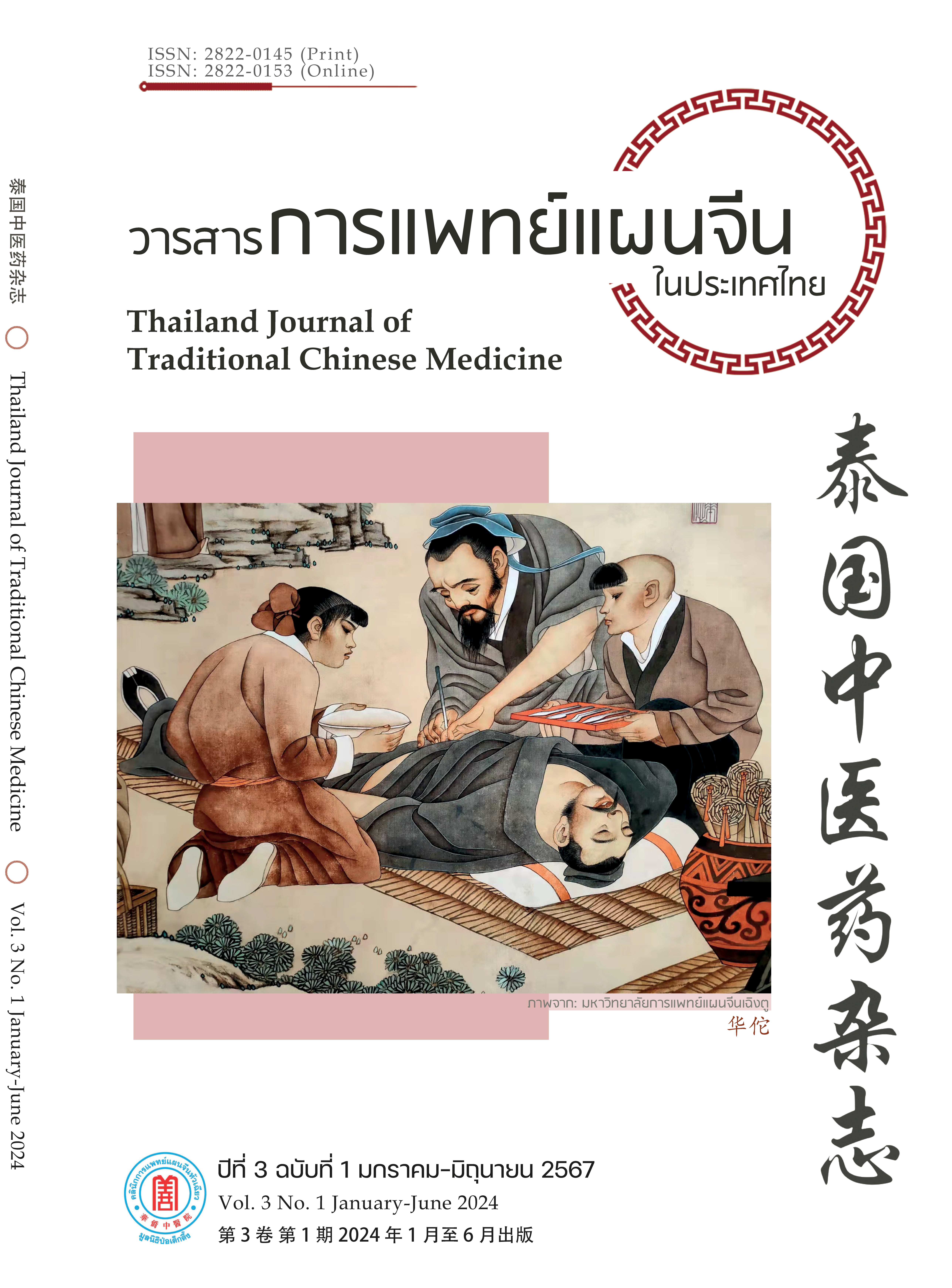Typical case of cervical spondylosis of uncovertebral joint disorder
Main Article Content
Abstract
As societal and environmental dynamics evolve, cervical spondylosis stands out as a prevalent health concern. Uncovertebral joint disorders are often linked to conditions like cervical spondylosis of radiculopathy and vertebral artery; and can also lead to serious cervical spondylosis. Although the pathogenesis remains contentious, in recent clinical, authors have found that there is also correlation between uncovertebral joint disorders and sympathetic cervical spondylosis. This article aims to fully understand the clinical significance of cervical spondylosis of uncovertebral joint disorder and provide a case study. Early detection of uncovertebral joint disorders is crucial for the evolution of cervical spondylosis, and early treatment can prevent and control its progression. The discussion in this article is intended to provide reference value for diagnosis and treatment, serving as a clinical reference basis.
Article Details
References
GBD 2021 Neck Pain Collaborators. Global, regional, and national burden of neck pain, 1990–2020, and projections to 2050: a systematic analysis of the Global Burden of Disease Study 2021. Lancet Rheumatol. 2024;6(3):e142–55.
Chinese Orthopedics Related Expert Group. Anhui province classification diagnosis and treatment guidelines for cervical spondylosis. Anhui Medical Journal. 2017;38(9):1087-94. (in Chinese)
Zhang ZM. Clinical study on "Long Shi manipulation" and acupuncture at Yunting cervical vertigo of treatment of uncovertebral joint disorder. China Journal of Chinese Medicine. 2014;29(5):766-8. (in Chinese)
Ombregt L. A system of orthopaedic medicine. 3rd ed. London: Churchill Livingstone; 2013.
Gunasena R, Bell DJ, Botz B, Hng J, Mishra H, Hacking C, et al. Uncovertebral joint [Internet]. 2016 [cited 2024 Apr 17]. Available from: https://radiopaedia.org/articles/44815
Magee DJ. Orthopedic physical assessment. 5th ed. Toronto: Elsevier Health Sciences; 2008.
Hirsch C, Schajowcz R, Galante J. Structural changes in the cervical spine: a study on autopsy specimens in different age groups [dissertation]. Gothenburg: University of Gothenburg; 1967.
Tubbs RS, Rompala OJ, Verma K, Mortazavi MM, Benninger B, Loukas M, et al. Analysis of the uncinate processes of the cervical spine: an anatomical study. J Neurosurg Spine. 2012;16(4):402-7.
Wang X, Ageru, Jiregelegen, Zhang C, Zhao L, Zhang YY, et al. Aging morphological characteristics of uncinate process of cervical vertebra and its clinical significance. Chinese Journal of Tissue Engineering Research. 2023;27(22):3580-6. (in Chinese)
Zhang WL. Discussion and analysis of x-ray diagnosis of juvenile cervical spondylosis. Contemporary Medicine. 2011;17(3):98-9. (in Chinese)
Li DQ. Cervical facet joint disorders clinical study [dissertation]. Changchun: Changchun University of Chinese Medicine; 2011. (in Chinese)
Wang HW, Jia J. Interpretation of relevant guidelines and expert consensus on rehabilitation of cervical spondylosis from the perspective of full-cycle rehabilitation. Chinese Journal of Medicine. 2021;56(8):825-9. (in Chinese)
Gao ZG, Liang SM. Diagnosis and operating manipulations of nerve root type cervical vertebral disease. Journal of Tuina and Rehabilitation Sciences. 2007;4(1):1-8. (in Chinese)
Huang TJ, Qin J, Zhong WY, Tang K, Quan ZX. The CT assessment of uncovertebral joints degeneration in a healthy population. Eur J Med Res. 2021;26(1):145.
Tzelnik M, Simonovich A, Stoychev V, Alperovich-Najenson D, Ezra D, Kalichman L. Uncovertebral joints’ degeneration prevalence and association with demographics and symptoms. SN Compr Clin Med. 2022;4(1):127.
Liu ZY, Hao YQ. Research progress on the etiology and pathogenesis of vertebral artery type cervical spondylosis. Practical Clinical Journal of Integrated Traditional Chinese and Western Medicine. 2015;15(4):88-90. (in Chinese)
Sun JX. Imaging analysis of 120 patients with cervical spondylosis. China Medicine and Pharmacy. 2011;1(11):62-4. (in Chinese)
Group Standard of China Association of Chinese Medicine. Evidence-based practice guideline of traditional Chinese medicine for cervical radiculopathy. Beijing: China Association of Chinese Medicine; 2023. (in Chinese)
Huang XY, Du LJ, Li JJ, Yang ML, Li J, Liu HW, et al. Regularity of clinical symptoms about patients with sympathetic cervical spondylosis. Chinese Journal of Rehabilitation Theory and Practice. 2019;25(12):1474-9. (in Chinese)
Moore DW. Cervical myelopathy [Internet]. 2023 [cited 2024 Apr 28]. Available from: https://www.orthobullets.com/spine/2031/cervical-myelopathy?section=bullets
Ling ZS, Jia GW, Yu LH. Research progress on the impact of uncovertebral joint hyperplasia on vertebral artery type cervical spondylosis. Chinese Journal of Physical Medicine and Rehabilitation. 2013;35(8):668-70. (in Chinese)
Zhang R, Wang SX, Li F, Xie S, Zhang QX. Uncovertebral joints degeneration of the cervical spine treated with jaw-supporting and spinous, process pressing method. Chinese Journal of Traditional Medical Traumatology & Orthopedics. 2014;22(11):35-6. (in Chinese)
Yang WS. Clinical observation on the treatment of cervical uncovertebral joints degeneration by pulling. Journal of Practical Traditional Chinese Medicine. 2016;32(12):1185-6. (in Chinese)


